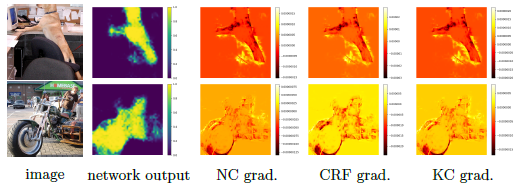Abstract

Minimization of regularized losses is a principled approach to weak supervision well-established in deep learning, in general. However, it is largely overlooked in semantic segmentation currently dominated by methods mimicking full supervision via “fake” fully-labeled masks (proposals) generated from available partial input. To obtain such full masks the typical methods explicitly use standard regularization techniques for “shallow” segmentation, e.g. graph cuts or dense CRFs. In contrast, we integrate such standard regularizers directly into the loss functions over partial input. This approach simplifies weakly-supervised training by avoiding extra MRF/CRF inference steps or layers explicitly generating full masks, while improving both the quality and efficiency of training. This paper proposes and experimentally compares different losses integrating MRF/CRF regularization terms. We juxtapose our regularized losses with earlier proposal-generation methods. Our approach achieves state-of-the-art accuracy in semantic segmentation with near full-supervision quality.
Copyright Notice
The documents contained in these directories are included by the contributing authors as a means to ensure timely dissemination of scholarly and technical work on a non-commercial basis. Copyright and all rights therein are maintained by the authors or by other copyright holders, notwithstanding that they have offered their works here electronically. It is understood that all persons copying this information will adhere to the terms and constraints invoked by each author’s copyright. These works may not be reposted without the explicit permission of the copyright holder.